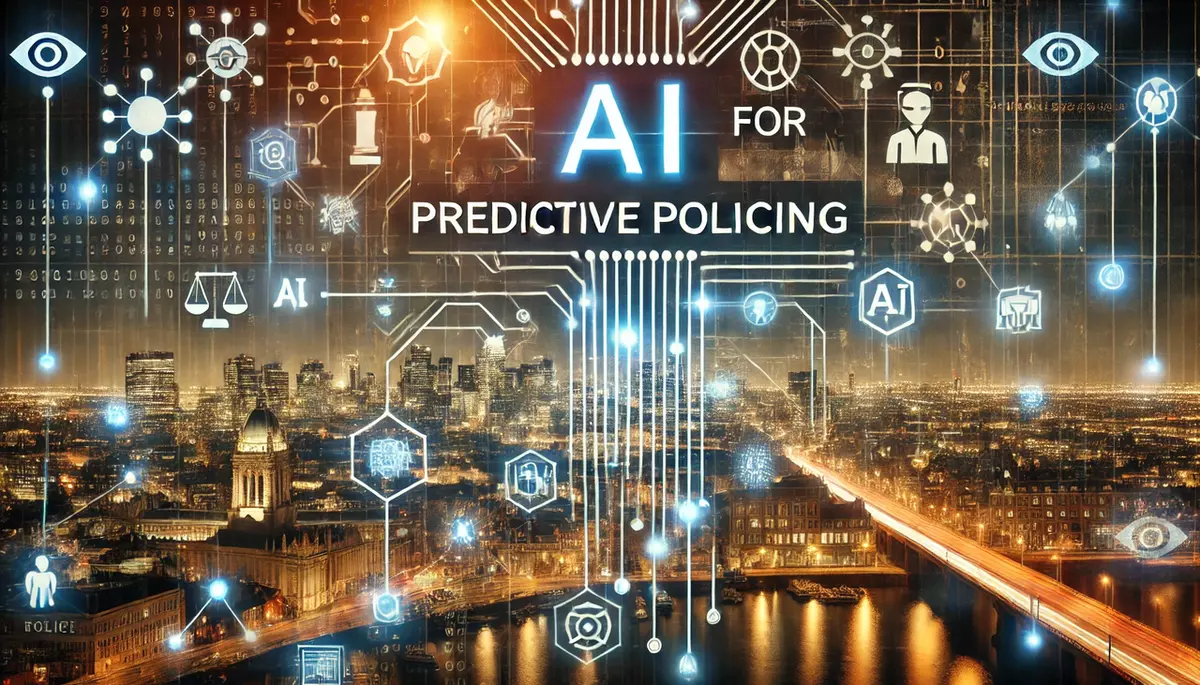Introduction
Predictive policing is the use of analytical techniques to identify potential criminal activity and proactively deploy police resources. Artificial intelligence (AI) has emerged as a powerful tool in this domain, enabling law enforcement agencies to leverage data and algorithms to predict and prevent crime. This knowledge base article explores the applications of AI for predictive policing, its benefits, challenges, and ethical considerations.
What is AI-Powered Predictive Policing?
AI-powered predictive policing refers to the use of machine learning algorithms and data analytics to identify patterns and forecast potential criminal behavior. By analyzing historical crime data, demographic information, and other relevant factors, these systems can generate predictions about where and when crimes are likely to occur, allowing law enforcement to allocate resources more effectively.
Key Components of AI-Powered Predictive Policing:
- Data Collection and Integration: Gathering and combining various data sources, such as crime reports, social media, and surveillance footage.
- Machine Learning Algorithms: Developing and training models to identify patterns and make predictions based on the collected data.
- Predictive Analytics: Leveraging the trained models to forecast the likelihood of criminal activities in specific locations and time periods.
- Automated Decision-Making: Providing law enforcement with real-time insights and recommendations for proactive resource deployment.
Benefits of AI-Powered Predictive Policing
The integration of AI into predictive policing offers several potential benefits:
Improved Crime Prevention
By accurately predicting where and when crimes are likely to occur, law enforcement can proactively deploy resources to deter and prevent criminal activities, leading to a reduction in overall crime rates.
Enhanced Resource Allocation
AI-powered predictive policing can help law enforcement agencies optimize the deployment of their personnel, equipment, and other resources, ensuring they are utilized more efficiently and effectively.
Faster Response Times
With the ability to anticipate criminal activities, law enforcement can respond more quickly to emerging situations, potentially leading to faster apprehension of suspects and reduced harm to victims.
Data-Driven Decision-Making
Predictive policing systems provide law enforcement with data-driven insights, enabling them to make more informed decisions and develop evidence-based strategies to address crime.
Challenges and Ethical Considerations
While AI-powered predictive policing offers significant benefits, it also raises several challenges and ethical concerns:
Bias and Fairness
The algorithms used in predictive policing systems may perpetuate or amplify existing biases in the data, leading to disproportionate targeting of certain communities and exacerbating issues of racial and socioeconomic disparities in law enforcement.
Privacy and Civil Liberties
The extensive data collection and analysis required for predictive policing raise concerns about individual privacy and the potential for abuse of personal information by law enforcement agencies.
Transparency and Accountability
The complexity of AI algorithms used in predictive policing can make it challenging to understand and explain the decision-making process, which can undermine public trust and hinder accountability.
Unintended Consequences
Predictive policing systems may have unintended consequences, such as displacing crime to other areas or leading to over-policing of certain neighborhoods, which can further erode community trust in law enforcement.
Best Practices and Ethical Considerations
To address the challenges and ethical concerns associated with AI-powered predictive policing, law enforcement agencies should consider the following best practices:
Ensure Algorithmic Fairness
Implement rigorous testing and auditing procedures to identify and mitigate biases in the data and algorithms used for predictive policing.
Prioritize Transparency and Accountability
Develop clear policies and procedures for the use of predictive policing systems, and engage with the community to foster trust and understanding.
Protect Privacy and Civil Liberties
Establish robust data governance frameworks and obtain informed consent from individuals whose data is being used, while also ensuring compliance with relevant privacy laws and regulations.
Continuous Evaluation and Improvement
Regularly review the performance and impact of predictive policing systems, and be prepared to adjust or discontinue their use if they are found to be ineffective or harmful.
Conclusion
AI-powered predictive policing holds the promise of enhancing crime prevention and improving the efficiency of law enforcement resources. However, the successful implementation of these systems requires a careful balance between the potential benefits and the ethical considerations. By addressing the challenges and adopting best practices, law enforcement agencies can leverage the power of AI to create safer communities while upholding the principles of fairness, transparency, and civil liberties.
This knowledge base article is provided by Fabled Sky Research, a company dedicated to exploring and disseminating information on cutting-edge technologies. For more information, please visit our website at https://fabledsky.com/.
References
- Benbouzid, B. (2019). Predictive Policing in the United States. Big Data & Society, 6(1), 2053951719861703.
- Brayne, S. (2017). Big Data Surveillance: The Case of Policing. American Sociological Review, 82(5), 977-1008.
- Ferguson, A. G. (2017). The Rise of Big Data Policing: Surveillance, Race, and the Future of Law Enforcement. NYU Press.
- Lum, K., & Isaac, W. (2016). To Predict and Serve? Significance, 13(5), 14-19.
- Selbst, A. D. (2017). Disparate Impact in Big Data Policing. Georgia Law Review, 52, 109.


























